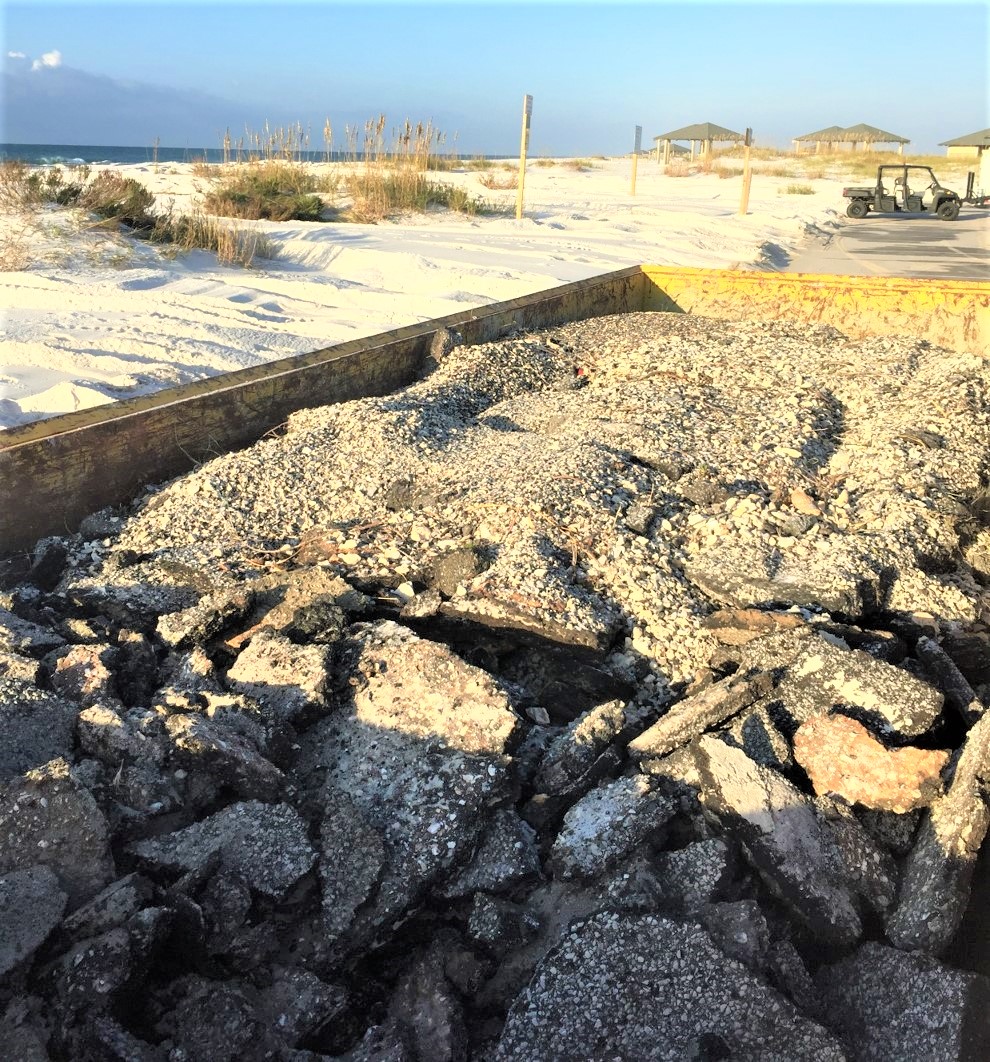
Year three of the beach enhancement and asphalt removal project at Gulf Islands National Seashore has been completed. This year’s work began at Perdido Key in September 2018 and returned to Santa Rosa in mid-October. Approximately 520 cubic yards of asphalt fragments and road base material debris were removed this year from over 126 acres of the Santa Rosa Area.
This year’s work included multiple treatments of high visitor use areas where wind exposed additional debris. Onsite work wrapped up on February 28 in time for shorebird nesting season. Demobilization of equipment and vehicles from Opal Beach will be completed by March 15.
The ongoing project, which also includes the Fort Pickens Area, removes asphalt pieces ranging from the size of large slabs to as small as a quarter of an inch in diameter, and other road base materials. Work is only performed in the offseason while shorebirds and sea turtles are not nesting. Native vegetation damaged during the asphalt removal process is replaced, limiting the impact of removal activities on the park’s natural resources.
“Removing the broken asphalt and road base material from park beaches makes a huge visual impact for our visitors, and helps restore the delicate beach habitat.” says Superintendent Dan Brown. “Once it is no longer part of the road, the broken, scattered asphalt it is much like litter, and does not belong on our beautiful beaches. So we’re doing our best to clean it up.”
Roadway debris has accumulated for more than 20 years following hurricanes and storms that destroyed and scattered portions of the park’s asphalt roads. The Beach Enhancement and Asphalt Removal project is a Deepwater Horizon Natural Resource Damage Assessment (NRDA) Early Restoration project. The work is being paid for with funds provided by BP as part of a 2016 settlement agreement with federal and state governments to compensate the public for injuries to natural resources and recreational use caused by the 2010 Deepwater Horizon oil spill.
More information about other Deepwater Horizon Natural Resource Early Restoration Projects can be found at the Trustees’ web site: www.gulfspillrestoration.noaa.gov.





































